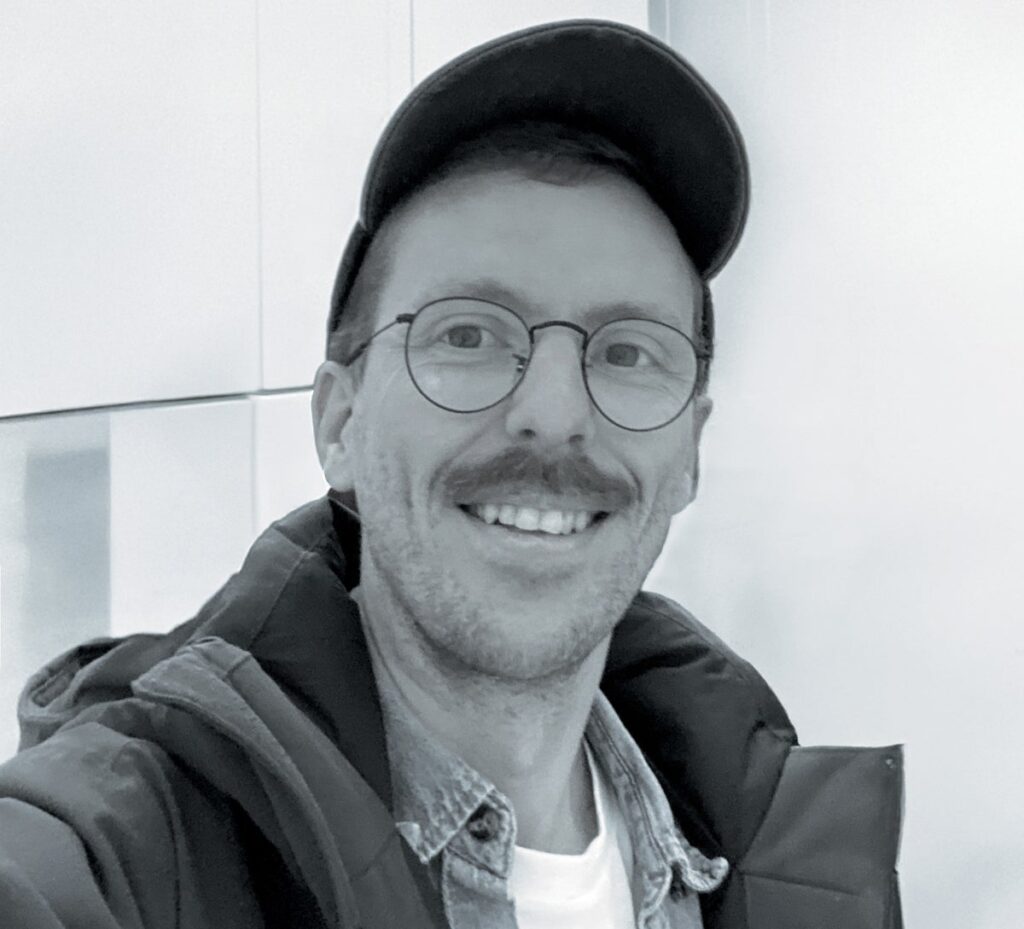August 19, 2025
4 min read
Contributors to Scientific American’s September 2025 Issue
Writers, artists, photographers and researchers share the stories behind the stories
David Cheney
Brain Washing
David Cheney is no mere artist—he’s a board-certified medical illustrator. In the Johns Hopkins University program where Cheney got his master’s degree, the artists study right alongside the medical students. So when Scientific American asked Cheney to render cerebrospinal fluid entering and exiting the brain for a feature by journalist Lydia Denworth on how the organ cleans waste during sleep, he already had a strong understanding of the anatomy.
Cheney filled stacks of sketchbooks as a kid but assumed he’d end up premed in college. He experimented with different paths (for a time, he was a musical theater major) until he learned about a career in medical illustration. It was an instant and lasting fit. “The field might be niche,” he says, “but it’s so varied in terms of what you can do with the training.”
On supporting science journalism
If you’re enjoying this article, consider supporting our award-winning journalism by subscribing. By purchasing a subscription you are helping to ensure the future of impactful stories about the discoveries and ideas shaping our world today.
He’s worked for medical clinics, academic institutions, and even a tech startup where he’s designing “an entire race of aliens” for a cryptocurrency game. Cheney would like to do more sculpture, specifically reconstructing “some extinct type of creature” for a natural history museum. “I wish more young artists who love science knew about this field where you can truly use both sides of your brain.”
Dava Sobel
Meter
When writer Dava Sobel learned that the earliest issues of Scientific American included poetry, she wanted to bring that tradition back to the magazine. Her pitch was to publish existing poems about science; instead the editors tasked her with soliciting original work. Sobel first approached poets she knew—Diane Ackerman was the inaugural contributor to the Meter column in January 2020—and then “the flood began,” she says. “The backlog of submissions is now yearslong.” Sobel doesn’t write poetry herself, but her long career as a science journalist and author has often involved “unearthing people’s letters, showing scientists as the real people they are.” Her first big success, she says, was her 1995 book Longitude, “which allowed me to write all the others.” One of the best fun facts about Sobel is she served on the Planet Definition Committee that redefined the term in 2006—an endeavor that ultimately led to Pluto losing its status as a planet. That move “was not our recommendation!”
As the Meter editor, Sobel looks for poems that “cause an emotional leap in me.” Other times she’ll choose a poem because “it attempts a tremendous challenge—and works.” Meter hopefuls take note: Sobel has a limit on limericks but likes to publish at least one humorous poem every year. “I’m the first to admit it’s totally subjective, and contributors are totally at my mercy.”
Charles C. Mann
Research in Reverse
When we asked author Charles C. Mann to write an essay about dramatic twists and turns in science, Mann, fortuitously, was already mulling the subject. “I write to try to figure out what I think,” he says. He teased apart genuine 180s— “when assumptions baked into a discipline turn out not to be right after someone gives them a hard look”—from a fraught kind of pivot, “when the normal back-and-forth of science gets pinned by people who make definitive proclamations based on exaggerated evidence.”
For someone who wrote a book (entitled 1491) that rethinks the environmental history of an entire continent, Mann isn’t sure he’s any better at coping with uncertainty than the rest of us. “But I would say I’m comfortable admitting that chance plays a huge role in what happens to me.” Sometimes, while working on a project, he gets “distracted by worrying about if I actually know what I’m talking about.” The research discursions that follow often lead to satisfying revelations. “It’s good to be aware of one’s own fallibility,” he says.
Mann has seemingly lost track of how many books he’s written (“I don’t know, nine?”), but his next one, about the North American West, will be published in 2026.
Andrew B. Myers
Peanut Proof
Photographer Andrew B. Myers (above), who shot this month’s cover story on peanut allergies by writer Maryn McKenna, likes the constraint of creating big worlds at small scale. What did Myers seek in the ideal peanut model? “You look for the very basic quality of a peanut, this eight shape with an hourglass curve,” he says. “But the curve can’t be so basic it looks fake. You want 90 percent perfect peanut and 10 percent little quirk. Just like human attractiveness.” By giving his subject a halolike light, Myers sought to make a singular, tiny peanut “feel ridiculously heroic.” Manipulating peanut butter for the shoot was less satisfying. “It’s kind of a gross, difficult substance to work with.”
Myers takes a layered and “zany” approach to making still-life images and describes himself as more of a sculptor and designer than a photographer. “I care a lot about building the frame and mixing processes,” he says. “I make things in a controlled, quiet setting with a camera on a tripod. I can’t remember the last time I held a camera in my hands.”
Myers, who has worked for a range of editorial and commercial clients, has an affinity for shooting scientific concepts in a clever, unexpected way. He’s inspired by the imagery that comes out of the lab of his spouse, who is a computational neuroscientist. “I like when scientists and artists get together,” he says. “Scientists are much more humble than your average artist, but both look outward and have a rock of curiosity.”

